Researchers Deborah Persaud and Gabriele Cromhout join AVAC’s Jessica Salzwedel to discuss the latest from CROI on pediatric cure.
Avac Event
Updates on Pediatric HIV Cure Research From CROI
Join us at CROI 2024!
Dear Advocate,
The 31st annual Conference on Retroviruses and Opportunistic Infections (CROI) kicks off this weekend, and runs from March 3-6 in Denver, Colorado. CROI is the go-to forum for groundbreaking science in the HIV field, and this years’ program is full of exciting new research.
At AVAC, we’re tracking data and discussion on long-acting, injectable PrEP; the dapvirine vaginal ring (DVR) in pregnancy; doxycycline as post-exposure prophylaxis (DoxyPEP) to prevent sexually transmitted infections (STIs); and the latest in HIV cure and control. We’re also very excited for this year’s Martin Delaney Presentation – Unveiling the Power of Uganda’s LGBTIQ Advocacy in Shaping HIV Response and Health Care Access – that will be delivered by Frank Mugisha of Sexual Minorities Uganda (SMUG) in Uganda and couldn’t be more timely. Be sure to check out the conference program.
AVAC and partners have worked to follow and explain the research presented at CROI for many years, making the science more accessible, connecting the findings to community priorities, and ensuring civil society and affected communities are represented within the program, and ultimately the research. For those attending or not, this email shares ways to follow along and join in the discussion and debate.
Follow Along
Be part of the conversation by following AVAC on X (Twitter) at @hivpxresearch for real-time updates using the conference hashtag #CROI2024, and be sure to sign up and follow our partner, Aidsmap, who will be reporting from the conference.
Community Breakfast Clubs (CROI registration not required
Join the CROI Community Liaisons, AVAC, the European AIDS Treatment Group, and partners for daily Community Breakfast Clubs. These virtual webinars feature researchers and advocates discussing some of the most consequential science being presented at CROI. They are open to all, CROI registrants and non-registrants alike.

Monday, 4 March, 7:00am – 8:00am MT (Click here to determine the time in your location.)
Spotlight on Social and Behavioural Science at CROI 2024
Tuesday, 5 March, 7:00am – 8:00am MT (Click here to determine the time in your location.)
Living with HIV for a Lifetime – It’s Complicated
Wednesday, 6 March, 7:00am – 8:00am MT (Click here to determine the time in your location.)
Looking forward to seeing you at the daily Breakfast Club sessions and to working together to unpack the research and be sure it is applied!
Best,
AVAC
HIV Cure and the Environment
AVAC and REACH for the Cure hosted a webinar to discuss how the environment may impact HIV cure strategies. During this webinar, both organizations explored how clades, co-infections, early treatment, and other factors can help inform existing approaches to HIV cure research. Dr. Adam Ward of Weill Cornell Medicine shared the latest data followed by an informal conversation.
Webinars to Look Out for in February!
2024 is off and running and a slew of webinars are on the calendar. This selection of topics is both broad and deep, providing updates on the pipeline from cure to vaccines, insights on critical advocacy, a conversation with the new director of NIAID, and opportunities for you to engage. Scroll down for what’s coming up and recordings of webinars from December and January that you may have missed.
Coming up!
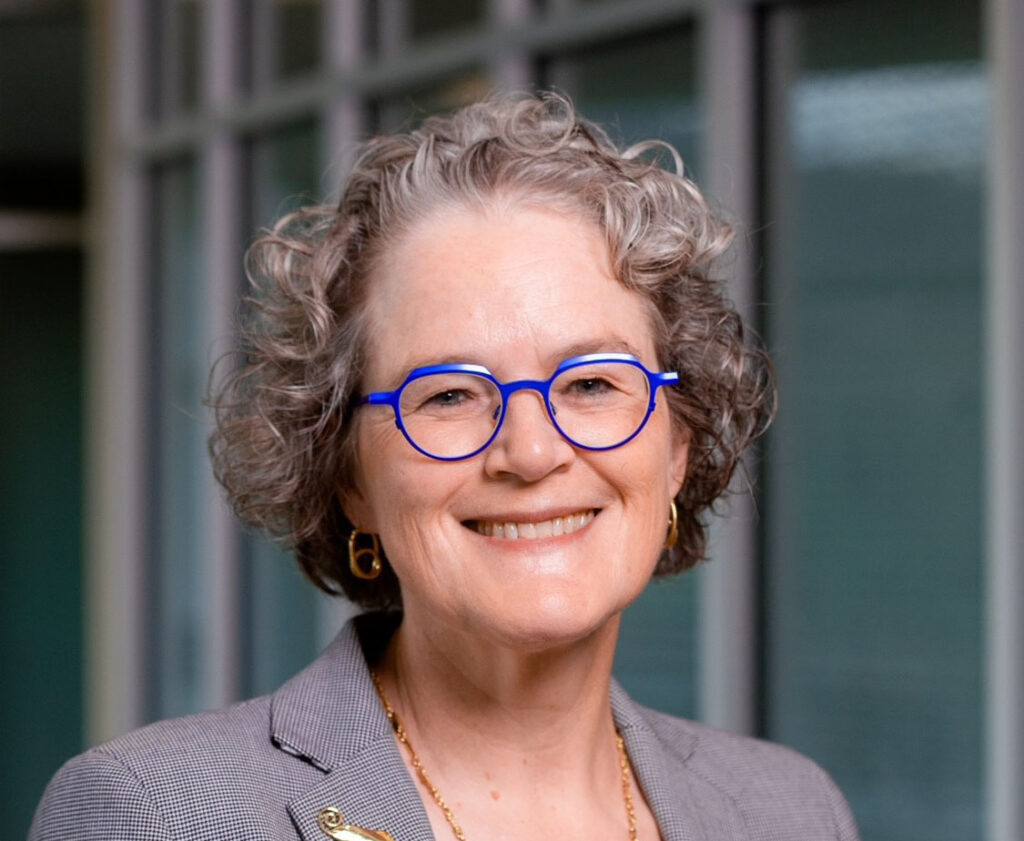
AVAC in Conversation with NIAID’s Jeanne Marrazzo
February 27, 11:30 am – 12:00 pm EST
Join AVAC in conversation with the new Director of NIAID, Jeanne Marrazzo. Register here.
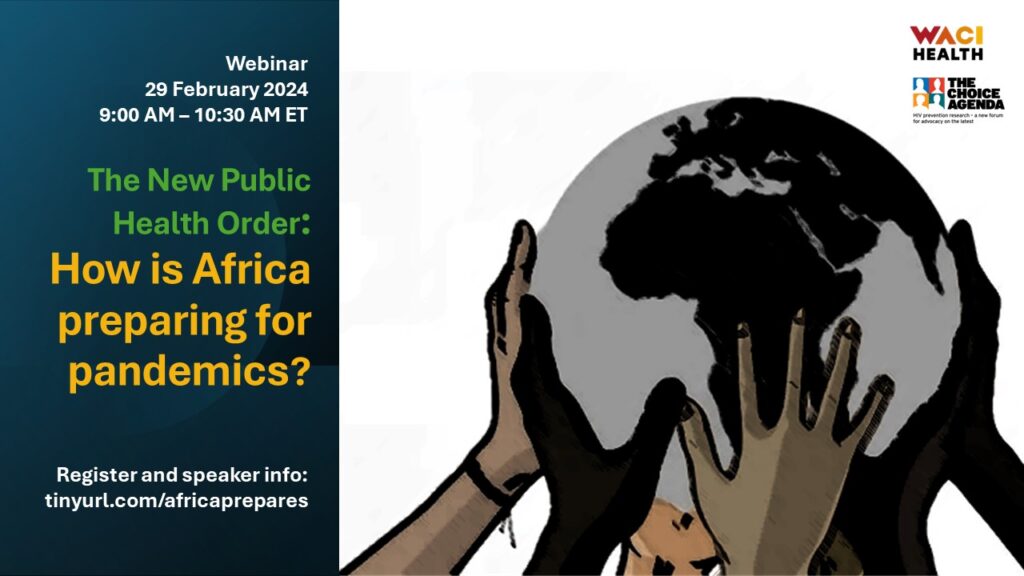
The New Public Health Order: How is Africa preparing for pandemics?
February 29, 9:00-10:30 am EST
WACI Health and The Choice Agenda invite you to join us for a webinar introducing key initiatives of the Africa CDC and the African Union. It will illuminate roles for civil society and community engagement. Register here.
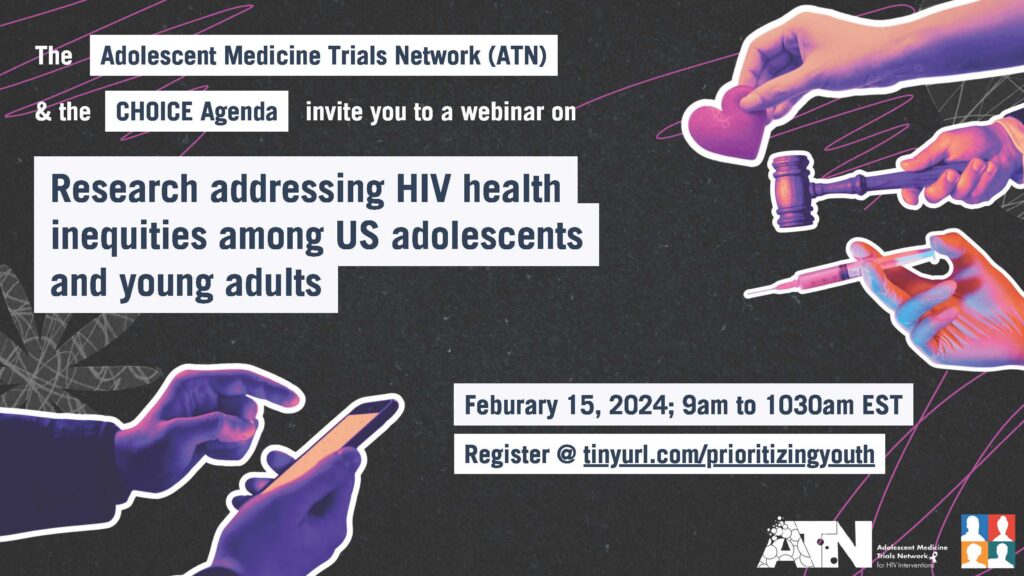
Join The Choice Agenda for an overview of the newest cycle of the Adolescent Medicine Trials Network! This webinar includes highlights of: ATN 165: Linking Youth to PrEP Services, which tests an innovative mobile delivery and mHealth intervention for PrEP adherence and persistence among sexual minority men; ATN 167: Legal, Economic, and Affirming Peer Support (LEAP) for transgender and gender diverse youth; and how the network prioritizes and amplifies the voices of youth directly impacted by the ATN’s pivotal research. Register here.
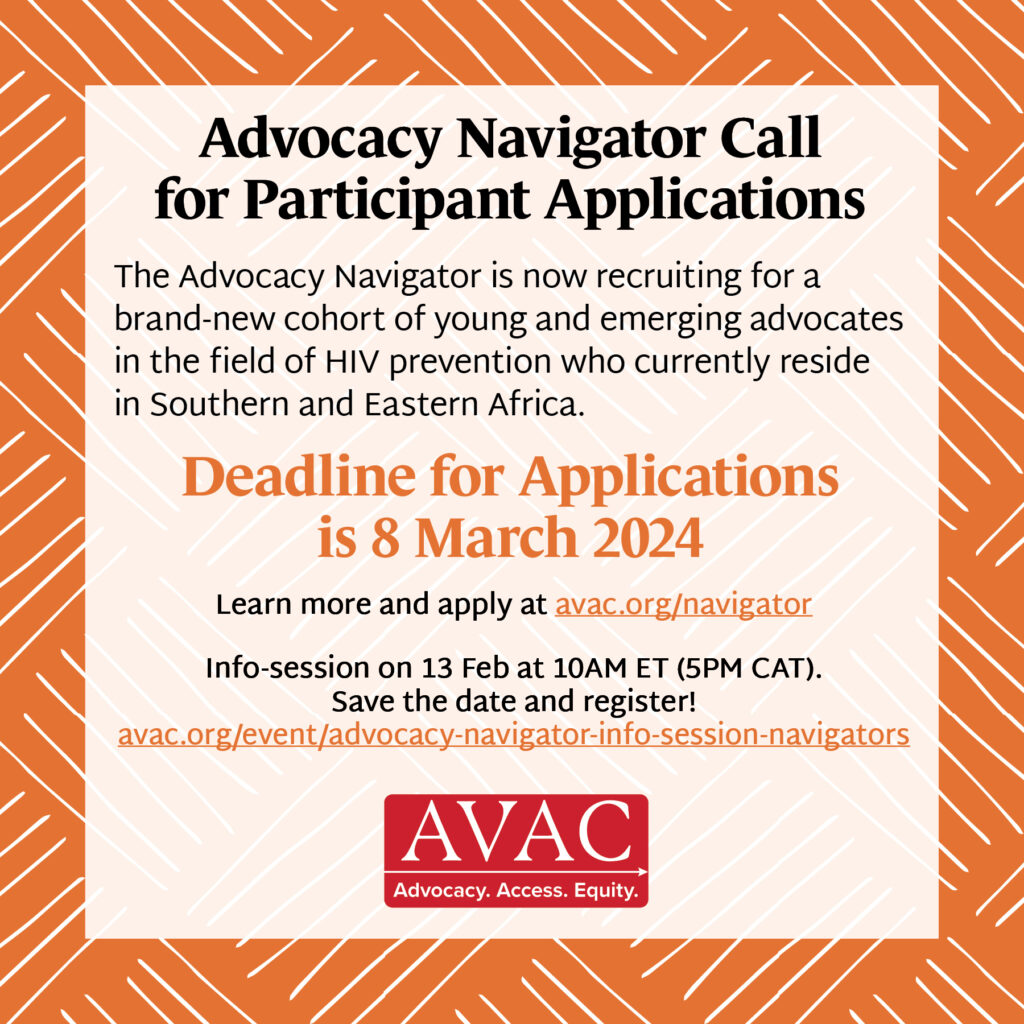
Advocacy Navigator Program Info Session
February 13, 10:00-11:00 am EST
This webinar is intended for anyone interested in applying to participate in AVAC’s Advocacy Navigator program. The session will provide an overview of the program, expectations, eligibility, and application process, followed by Q&A with the AVAC team.
In case you missed it!
Reporting the African Science Story: Decoding scientific research to support public health in Africa
Through the Media Science Café Program, AVAC partners with health media associations in Kenya, Tanzania, Uganda, Zambia and Zimbabwe to bring journalists together with researchers, implementers, civil society, policy makers, regulators and policy makers to build relationships that will foster accurate reporting of HIV, COVID and other science or health stories in those countries. Learn about the model! Recording, slides and resources.
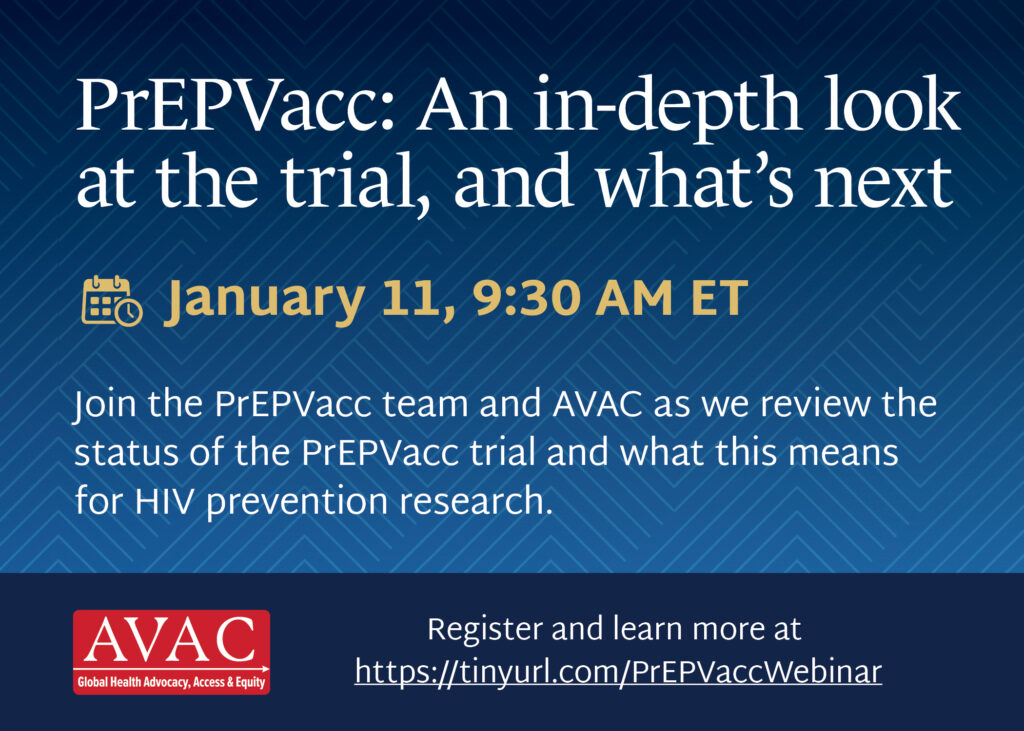
PrEPVacc: An in-depth look at the trial, and what’s next
This webinar reviewed key aspects of PrEPVacc, including its innovative study design, implementation, integrated social science, and data analysis plans. An engaging conversation about what we’ve learned from PrEPVacc, what we can still learn, and what this may mean for the HIV prevention field. Recording, slides and resources.
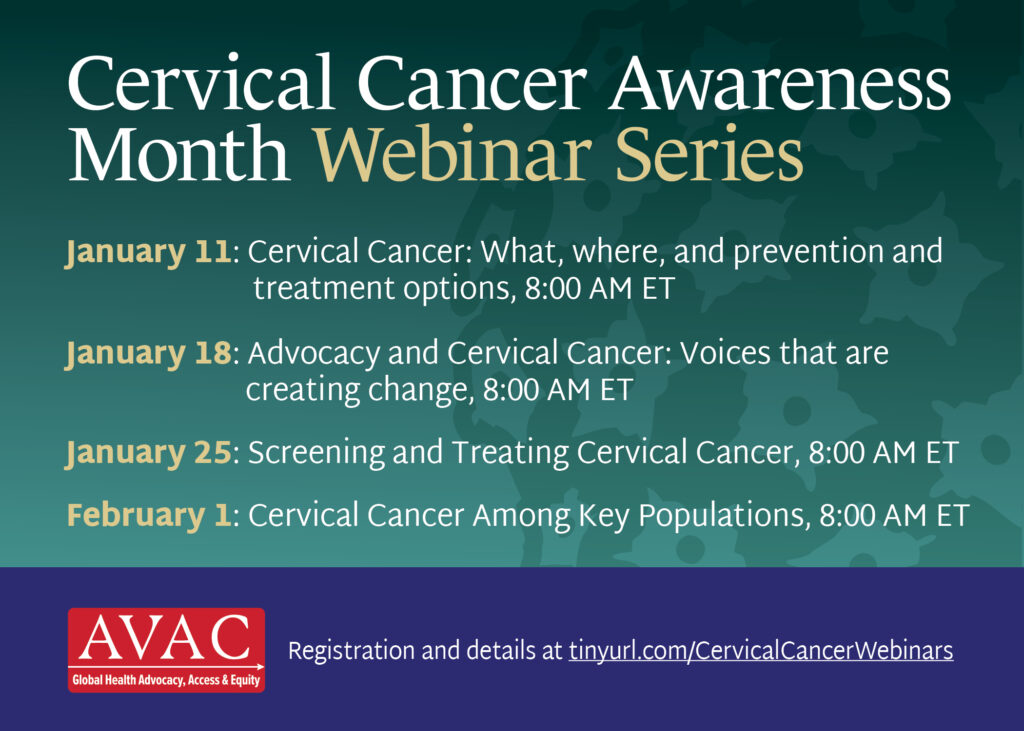
Cervical Cancer Awareness Month Webinar Series
Check out our 4-part webinar series on cervical cancer, which featured a deep dive on: what cervical cancer is, who is impacted, and prevention and treatment options; advocacy strategies to bring more attention to cervical cancer and its impact on communities; options for screening and treating cervical cancer along with ongoing research; and the impact of cervical cancer on key populations and those vulnerable to HIV infections. Recording, slides and resources.
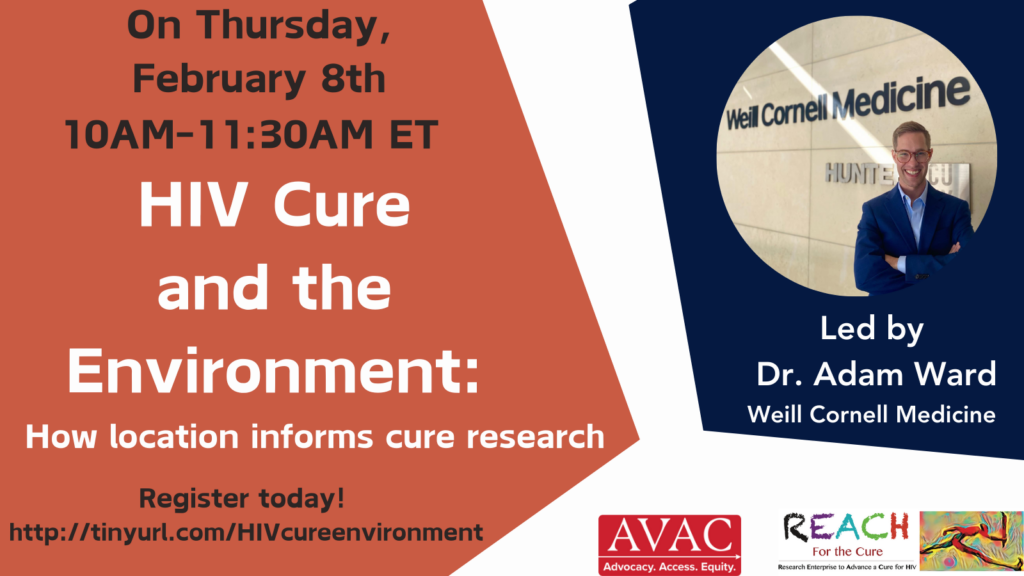
HIV Cure and the Environment: How location informs cure research
This webinar reviewed core concepts discussed in the previous webinar, Let’s Talk About HIV Cure Research: An Introduction to the science under investigation, and introduced how the environment may impact cure strategies. Recording, slides and resources.
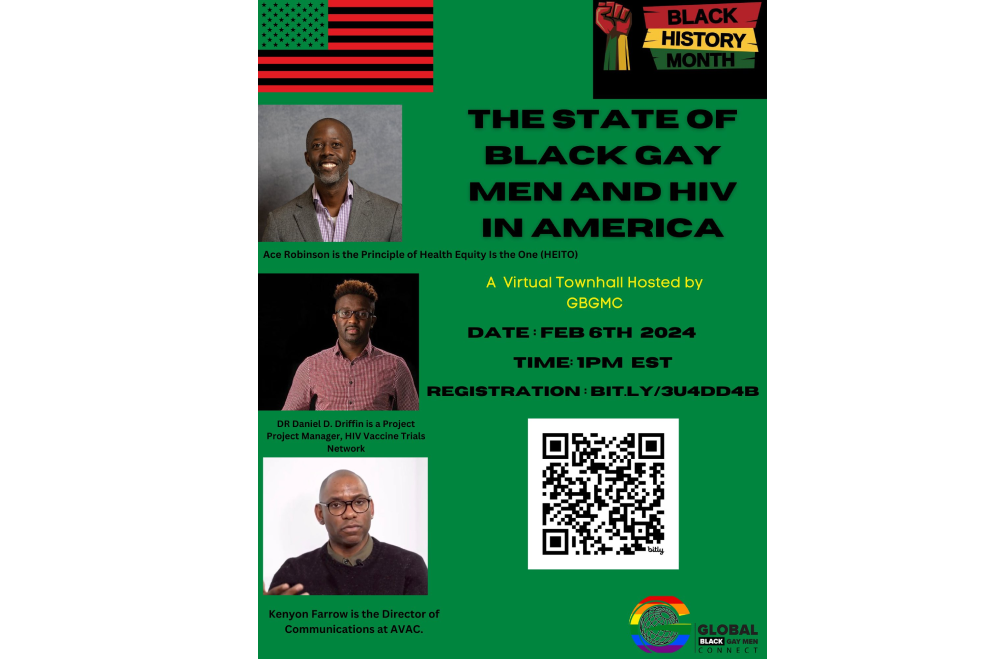
Learn more about the townhall discussion on Black Gay Men and HIV in the US featuring influential figures in the Black Gay community, including Ace Robinson, Daniel D. Driffin, and Kenyon Farrow by checking out highlights on AVAC’s Twitter page and watch the full recording.
Thanks for checking out these conversations. We hope you will join us in these rich discussions and watch this space for future webinars!
Avac Event
HIV Cure and the Environment: How location informs cure research
AVAC and REACH for the Cure hosted a webinar to discuss how the environment may impact HIV cure strategies. During this webinar, both organizations explored how clades, co-infections, early treatment, and other factors can help inform existing approaches to HIV cure research. Dr. Adam Ward of Weill Cornell Medicine shared the latest data followed by an informal conversation.
Avac Event
AVAC in Conversation with NIAID’s Jeanne Marrazzo
The new director of National Institute of Allergy and Infectious Diseases (NIAID), Dr. Jeanne Marrazzo joined AVAC Executive Director in conversation.
Let’s Talk About HIV Cure Research: An introduction to the science under investigation
Dr. Marina Caskey of Rockefeller University and members of the REACH Community Advisory Board hosted a webinar on November 15 to review the current state of HIV cure research. This webinar explored what makes curing HIV so challenging, the strategies being pursued, and what is happening in locally in NYC!
Avac Event
Sex, Gender & HIV Cure Research
Wednesday, December 6, 1:00 to 2:00 PM ET
This webinar reviewed core concepts discussed in the previous webinar, Let’s Talk About HIV Cure Research: An Introduction to the science under investigation and introduce how hormones may impact cure strategies.
This webinar featured Dr. Jessica Prodger of Western University.
Objectives:
- Review key concepts and terminology of HIV cure
- Known sex differences of HIV progression
- Potential impact of hormones on HIV cure strategies
Recording
Avac Event
Let’s Talk About HIV Cure Research: An Introduction to the science under investigation
Wednesday, November 15, 11:00 to 12:30 PM ET
Dr. Marina Caskey of Rockefeller University and members of the REACH Community Advisory Board hosted a webinar on November 15 to review the current state of HIV cure research. This webinar explored what makes curing HIV so challenging, the strategies being pursued, and what is happening in locally in NYC!
Avac Event
Foundations of HIV Cure Research
In advance of the Strategies for an HIV Cure meeting, AVAC is hosting a foundational training for lay audiences interested in building their knowledge of HIV cure research. Through interactive sessions led by leading experts in the field, the meeting will provide attendees the ability to understand and translate basic science information.
The program will feature: Janet Siliciano, Deborah Persaud, Steven Deeks, Rebecca Lynch and David Margolis.
Recording of Dr. Janet Siliciano Presentation / Recording of Dr. Adam Ward Presentation / Recording of Dr. Deeks, Dr. Persaud, Dr. Joseph, Dr. Jones Presentation